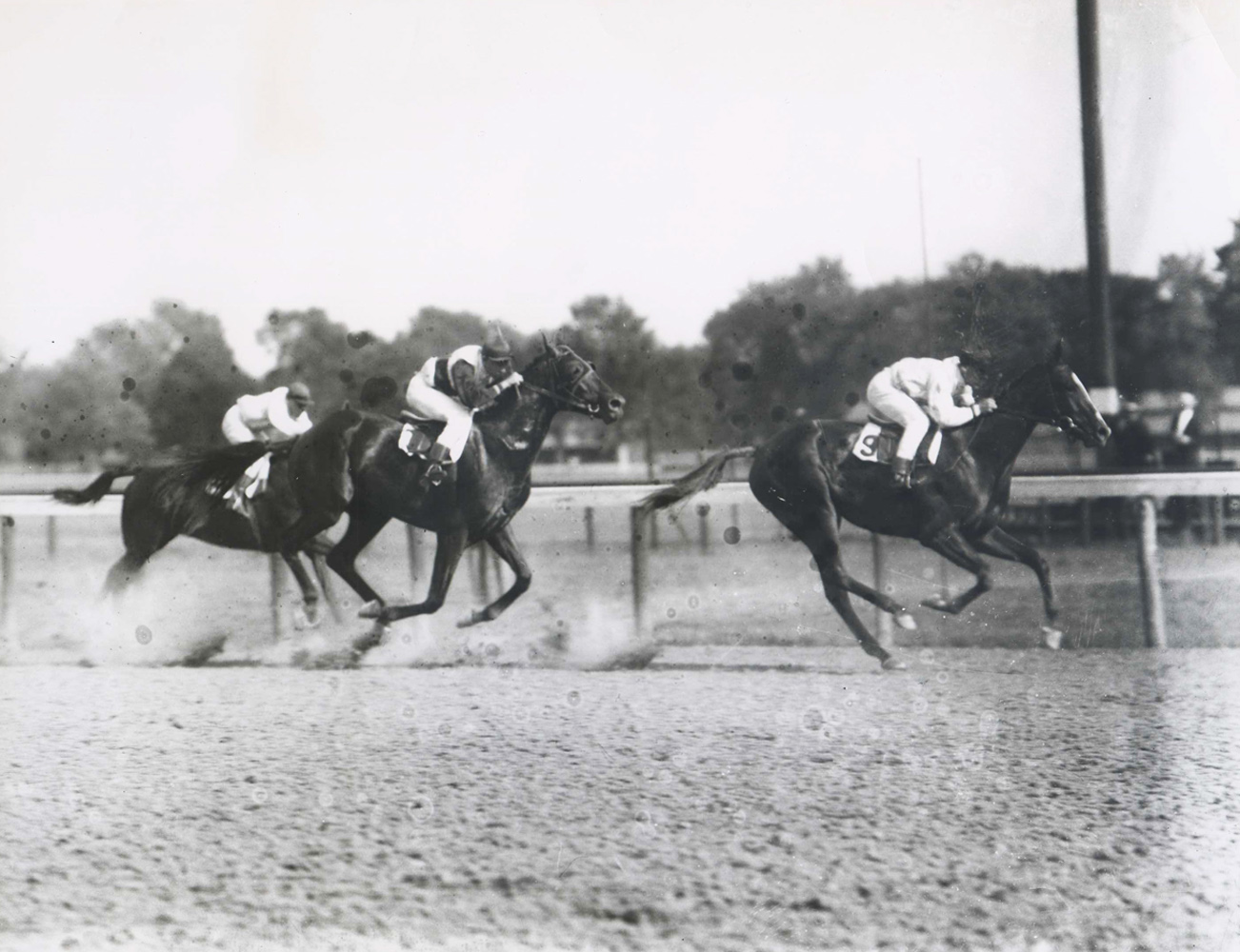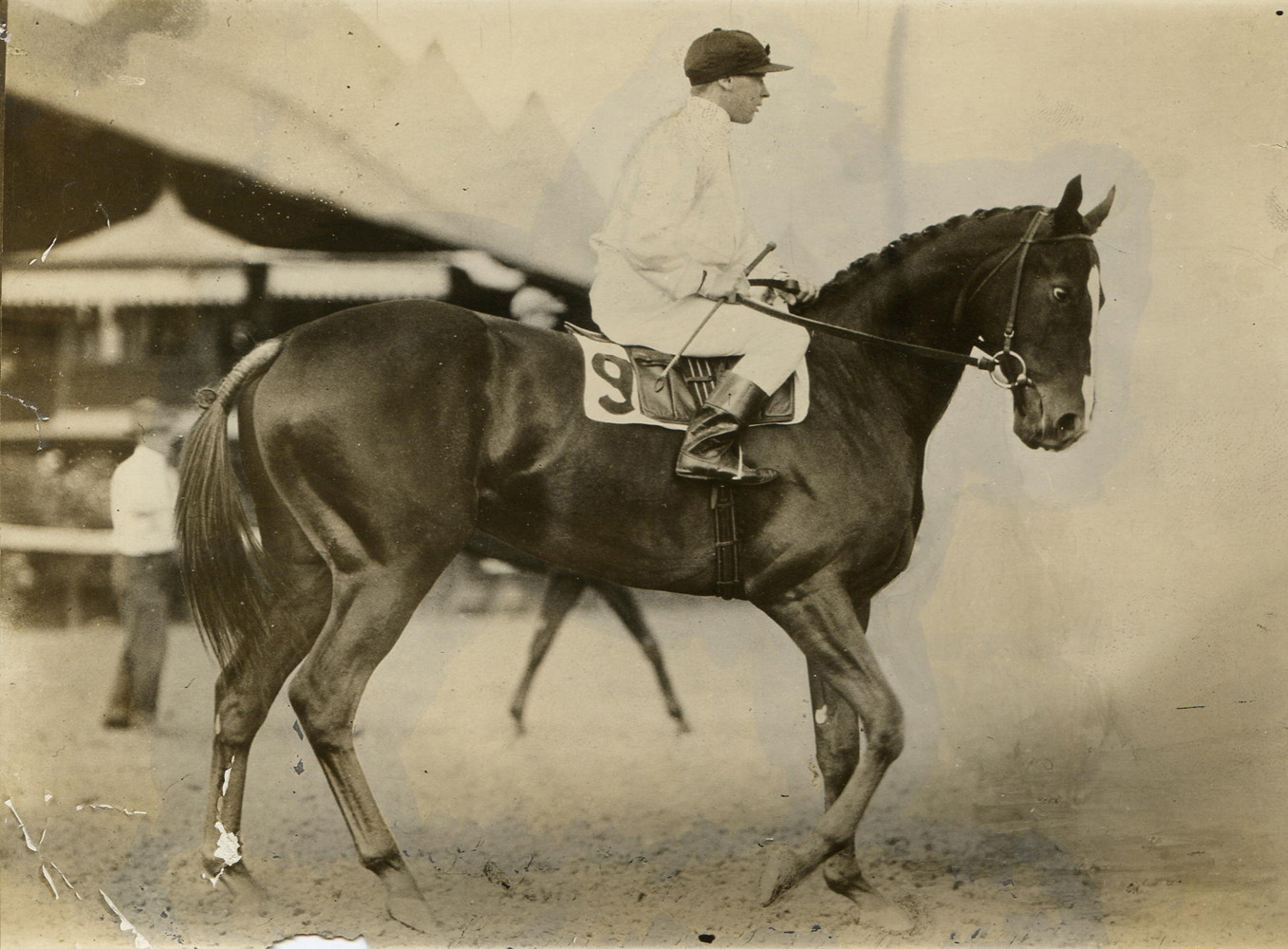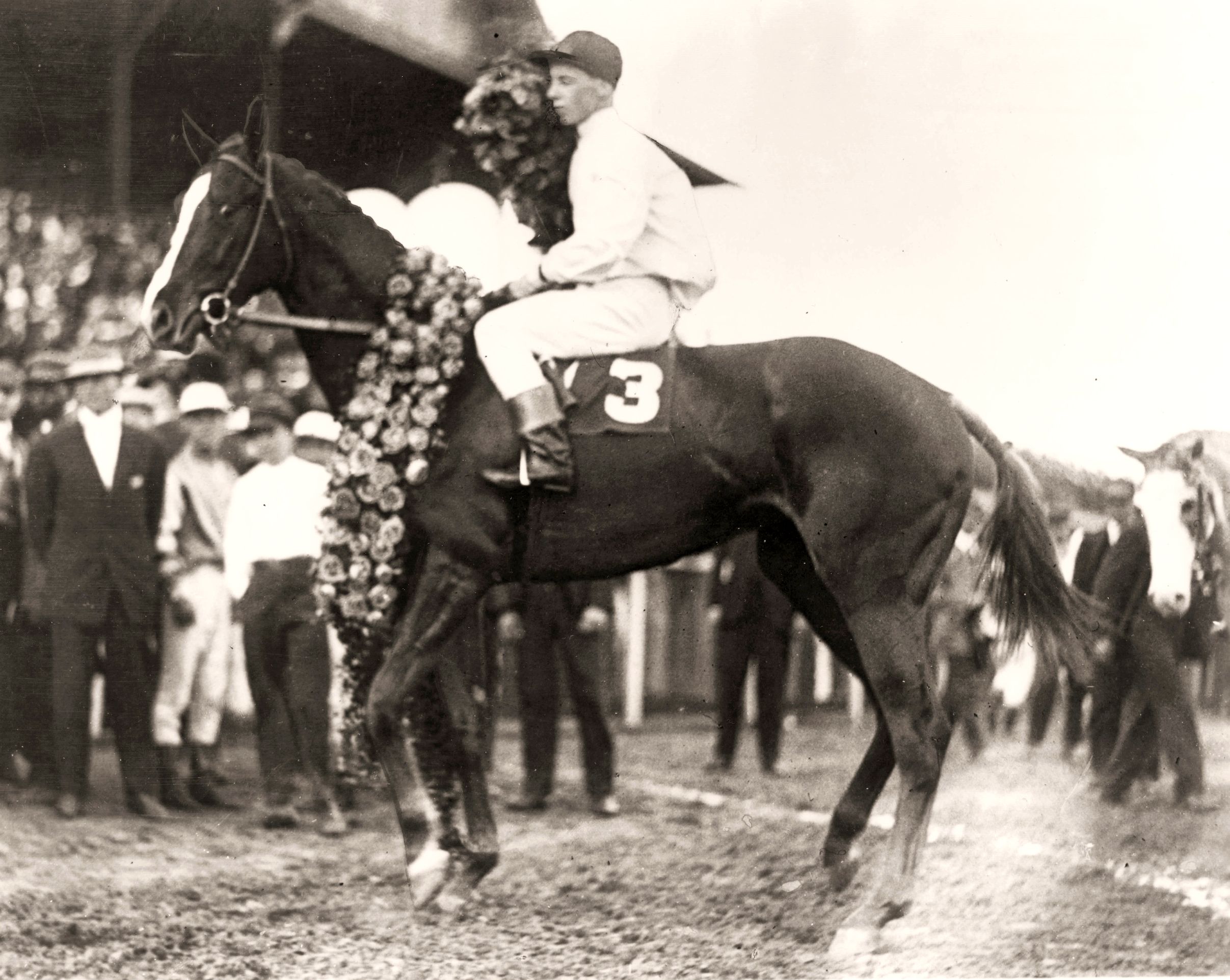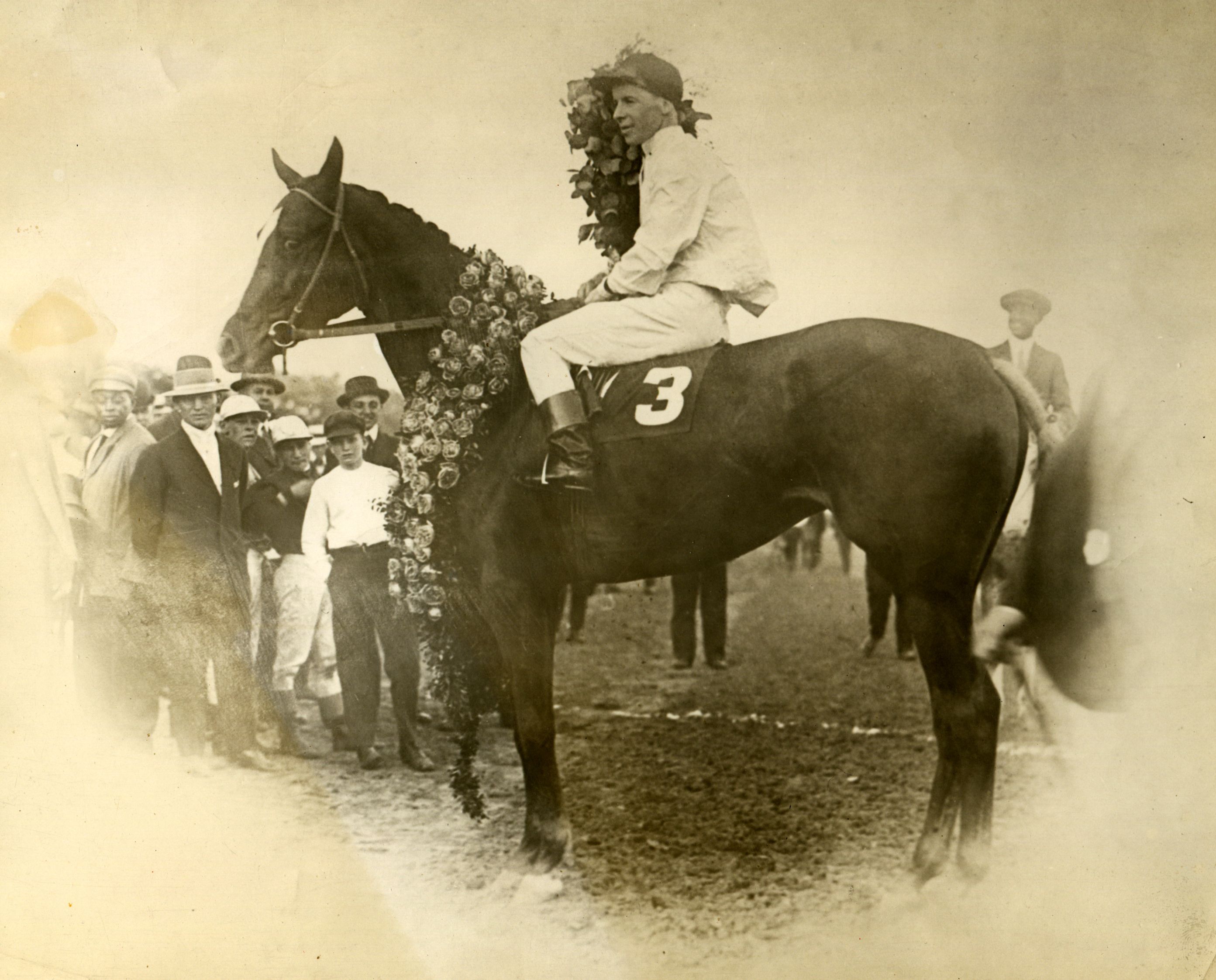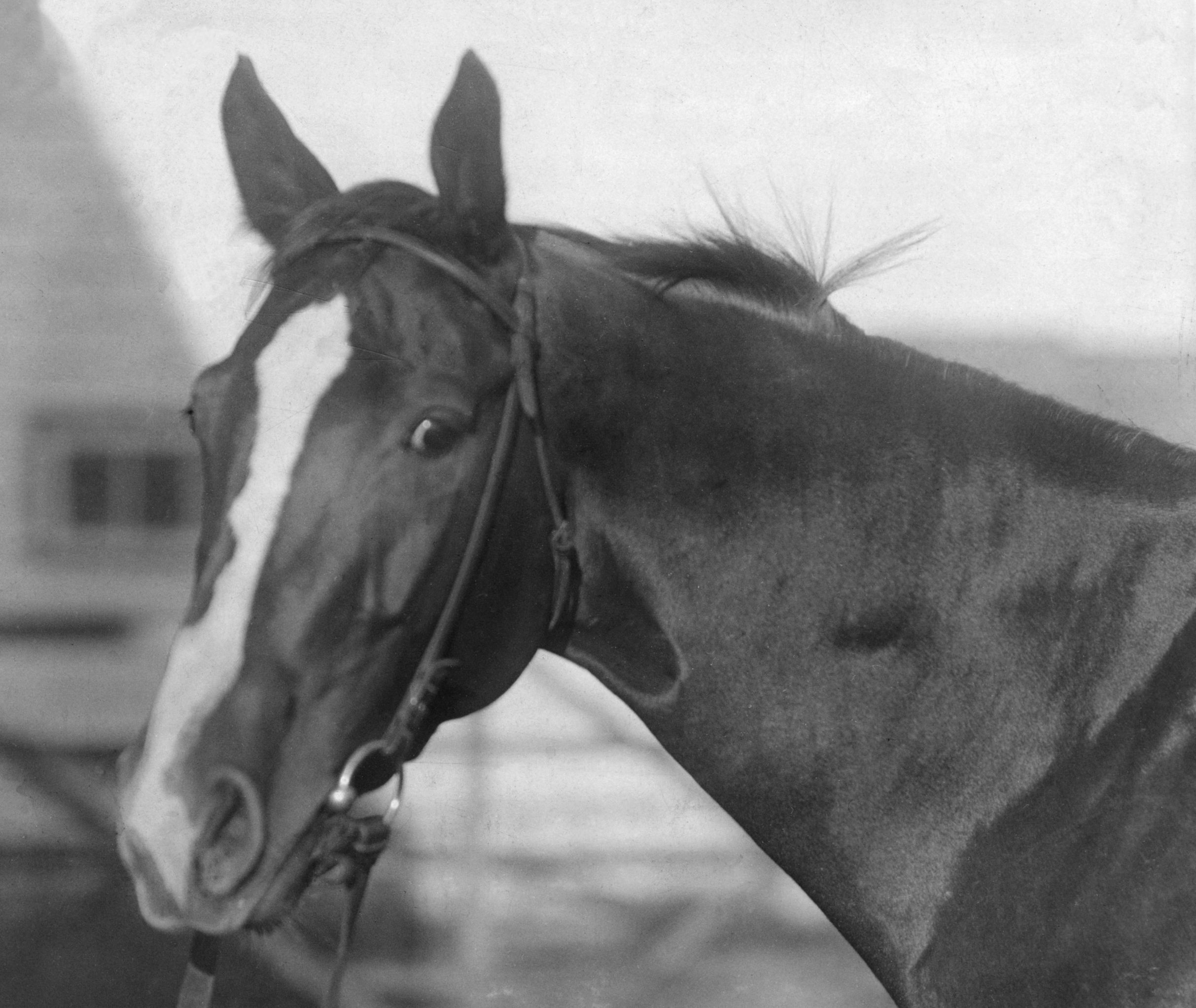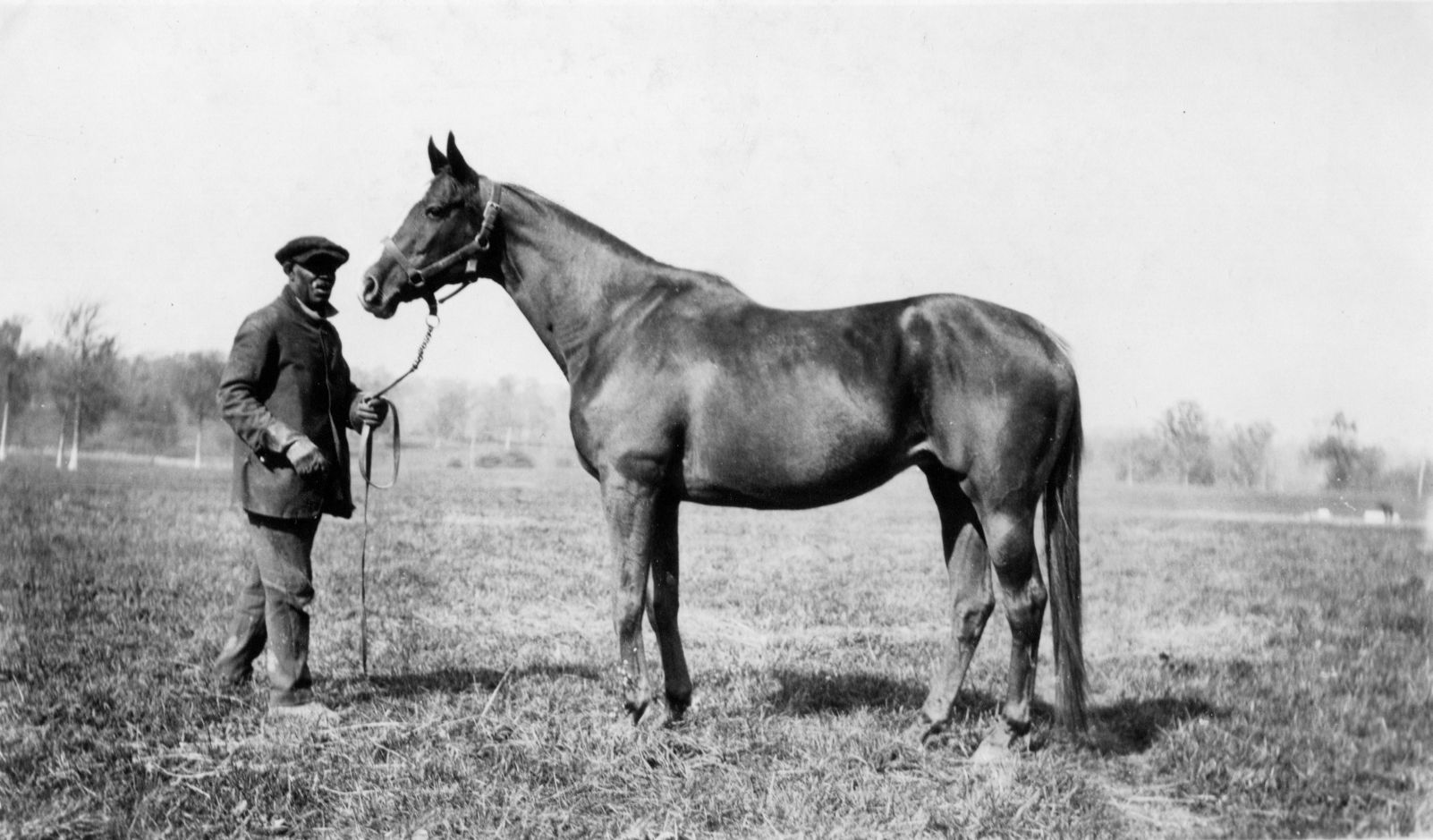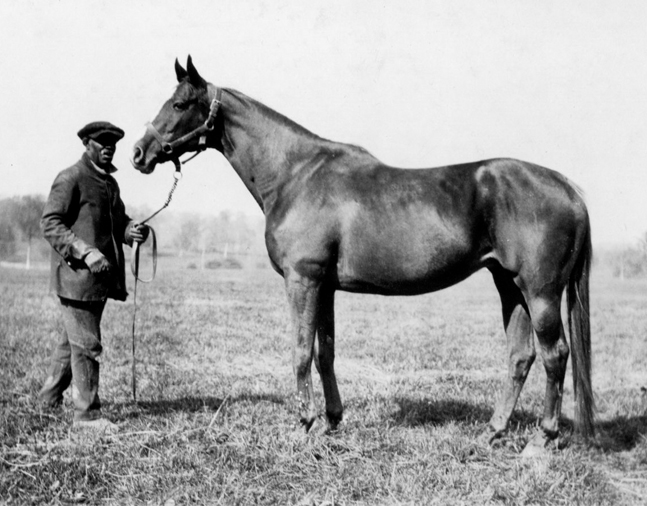Regret (NJ)
Regret was the first filly to win the Kentucky Derby. In fact, she won all her races at ages 2 and 3 — and beat colts each time. In her first season, Regret won the Saratoga Special, Sanford, and Hopeful Stakes.
Racing Record
11
Starts
| 1914 | 3 | 3 | 0 | 0 | $0 $0 |
| 1915 | 2 | 2 | 0 | 0 | $0 $0 |
| 1916 | 2 | 1 | 0 | 0 | $0 $0 |
| 1917 | 4 | 3 | 1 | 0 | $0 $0 |
Biography
Regret was the first filly to win the Kentucky Derby. In fact, she won all her races at ages 2 and 3 — and beat colts each time. In her first season, Regret won the Saratoga Special, Sanford, and Hopeful Stakes.
Beating the boys, however, was only part of Regret’s fascinating story. Along with leaving the best colts of her generation in the dust, Regret’s landmark victory in the 1915 Kentucky Derby entrenched the race as an American institution.
Although she only raced 11 times, Regret’s ground-breaking achievements earned her acclaim as one of the greatest female racehorses of all time. On Aug. 8, 1914, the 2-year-old New Jersey-bred chestnut filly by Broomstick out of the Hamburg mare Jersey Lightning made her career debut at Saratoga Race Course. Regret, who was foaled at Harry Payne Whitney’s Brookdale Farm near Red Bank, New Jersey, was highly regarded because of the class in her pedigree. Broomstick won the Travers in 1904 and was America’s leading sire in 1913, 1914, and 1915. Jersey Lightning’s sire, Hamburg, won the Congress Hall Stakes at Saratoga as a 2-year-old in 1897 under 134 pounds and concluded his stellar career with a 100-length victory in the Brighton Cup at 2¼ miles. Both Broomstick and Hamburg are members of the Hall of Fame.
Bred and owned by Whitney and trained by the Hall of Famer James G. Rowe, Regret didn’t waste any time announcing her presence with authority when she broke her maiden at first asking in the Saratoga Special. With jockey Joe Notter in the irons, Regret, the only filly in the field, led the entire way and won by a length over Pebbles with “speed in reserve” according to Daily Racing Form.
Assigned an impost of 127 pounds, Regret returned to the historic Spa oval a week later for the Sanford Memorial Stakes. Regret had no problem carrying the weight or navigating a sloppy track en route to a 1½-length victory under heavy restraint by Notter.
The Hopeful was contested a week after the Sanford and once again Regret was assigned 127 pounds. She broke slowly in a field of 12 (for the third consecutive race she was the only filly competing) and was forced into some tight quarters during the race. Churning her way through the Saratoga mud, Regret finally found some daylight and gamely secured a half-length victory over Andrew M., who carried only 114 pounds.
With her sweep of the Saratoga Special, Sanford and Hopeful in a 14-day span, Regret became the first horse of either sex to win that trio of signature Saratoga events for juvenile males. Only three others — Campfire (1916), Dehere (1993) and City Zip (2000) — have since accomplished the feat. Regret is the only filly of the four.
Although no injury was officially disclosed, Rowe took Regret out of training following the Hopeful. Her reputation grew as she sat on the sidelines. Pebbles, who was second in the Saratoga Special and third in the Hopeful, went on to win five stakes races in 1914 and was considered the best 2-year-old colt of the season.
Col. Matt Winn, the impresario of Churchill Downs, was always looking for ways to expand the prominence of the Kentucky Derby. Although it was considered a marquee race and had 40 years of tradition by 1915, the Derby had yet to reach iconic cultural status.
Regret changed all of that.
Whatever ailment had sent Regret to the bench after her Hopeful victory the summer before was still somewhat of a concern as the 1915 Kentucky Derby approached. Years later, Notter recalled Rowe being hesitant to run Regret at Churchill.
“Trainer Rowe and I slept in the stables all week. I won’t forget that experience. The roof leaked and when it rained during the six days we spent there I got soaked. Regret went off her feed down in Louisville,” Notter said. “She worked well enough in New Jersey, but the train ride upset her. At Churchill Downs, she worked the Derby distance first in 2:14⅗, and then three days before the race repeated her work going the distance in 2:08⅗. Mr. Rowe wondered if he should run her.”
Whatever trepidation Rowe had wasn’t enough to keep Regret out of the Derby. With an estimated 49,000 in attendance, Regret went off as the moderate favorite in the field of 16 and the lone filly in the field quickly made the lead. Pebbles, her old rival from Saratoga, sat just off the pace and tracked Regret throughout. Pebbles made a bid for the lead in the final quarter, but Regret, who had not raced in 259 days, once again displayed her superiority and won by two lengths in 2:05⅖. It was the second Derby victory for Rowe, who had previously won the race 34 years earlier with Hindoo in 1881. Prior to Regret, 29 fillies had run in the Kentucky Derby without a victory.
“She did not fail us,” Winn said. “Regret has made the Kentucky Derby!”
Winn was right. In becoming the first filly to win the Derby, Regret brought enormous newspaper coverage to Churchill’s signature race and helped transform a regional event into a national spectacle.
The Louisville Courier-Journal offered the following: “ … never shall we forget her gorgeous appearance on that memorable afternoon in May at Churchill Downs as she was led around the paddock before the race and later, when, with colors up, she stepped out on the course looking every inch a queen … receiving an ovation of which even royalty might well have been proud. Peerless Regret she was hailed and peerless she undoubtedly was, and from this day, she must be thought of with this descriptive adjective affixed.”
Whitney, one of the leading men of racing, was overjoyed with his filly’s performance and lauded the importance of the Kentucky Derby.
“Isn’t she the prettiest filly you ever saw? You know, this is the greatest race in America at the present time and I don’t care if she ever starts again,” Whitney said. “The glory of winning this event is big enough. Regret can retire to the New Jersey farm any time now.”
Regret made one more start as a 3-year-old. She returned to Saratoga in August for the Saranac Stakes in what was billed as her greatest challenge to date. Regret was set to meet The Finn, winner of the Belmont, Withers and Manhattan Handicap. The race was never in doubt. Regret defeated Trial by Jury by 1½ lengths, while The Finn was never a factor. Lady Rotha, who won the Travers that summer, finished third.
Regret did not race again until July 1916. She returned in the Saratoga Handicap and suffered her first career defeat, finishing off the board. Regret bounced back with an easy allowance score at the Spa a couple weeks later before being put away for the year after only the two starts.
As a 5-year-old in 1917, Regret began her campaign with an easy allowance score at Belmont Park in May. She was then entered in a star-studded edition of the Brooklyn Handicap at Aqueduct. Regret was one of three Kentucky Derby winners in the field along with Hall of Famer Old Rosebud and Oman Khayyam. The cast also included Hall of Famer Roamer, Stromboli (who defeated Regret in the Saratoga Handicap in 1916), and Borrow, a stablemate of Regret.
Regret was taken to the lead in the Brooklyn by jockey Frank Robinson and staved off several challenges, but according to contemporary reports Robinson became overconfident on the lead and began to ease Regret in the stretch. Borrow and Old Rosebud made late moves and Borrow got up for a nose victory over Regret, setting an American record of 1:49⅖ for 1⅛ miles.
Regret raced two more times following the Brooklyn. She met Coaching Club American Oaks winner Wistful in the Gazelle Handicap at Aqueduct, defeating her by three lengths while conceding 24 pounds. Regret concluded her career Sept. 25, 1917, at Aqueduct by setting a seven-furlong track record of 1:24⅕ while carrying 127 pounds. She was retired with a record of 9-1-0 from 11 starts and earnings of $35,093.
Upon her retirement, Regret was sent back to Brookdale Farm. She produced eight fillies and three colts that made their way to the races, but none of them were able to replicate the brilliance of their dam. Whitney later moved his breeding operation to Lexington, Kentucky, where Regret spent her final years. She died on April 11, 1934, and was buried on the Whitney property, which itoday is part of Gainesway Farm.
Regret’s grave sits on a tranquil hillside along with the final resting markers of racing legends such as Hall of Famers Broomstick, Whisk Broom II, and Peter Pan. Only two fillies — Genuine Risk (1980) and Winning Colors (1988) — have won the Kentucky Derby since Regret.
Achievements
Champion 2-Year-Old Filly — 1914
Horse of the Year — 1915
Champion 3-Year-Old Filly — 1915
Triple Crown Highlights
Won the Kentucky Derby — 1915
Media
